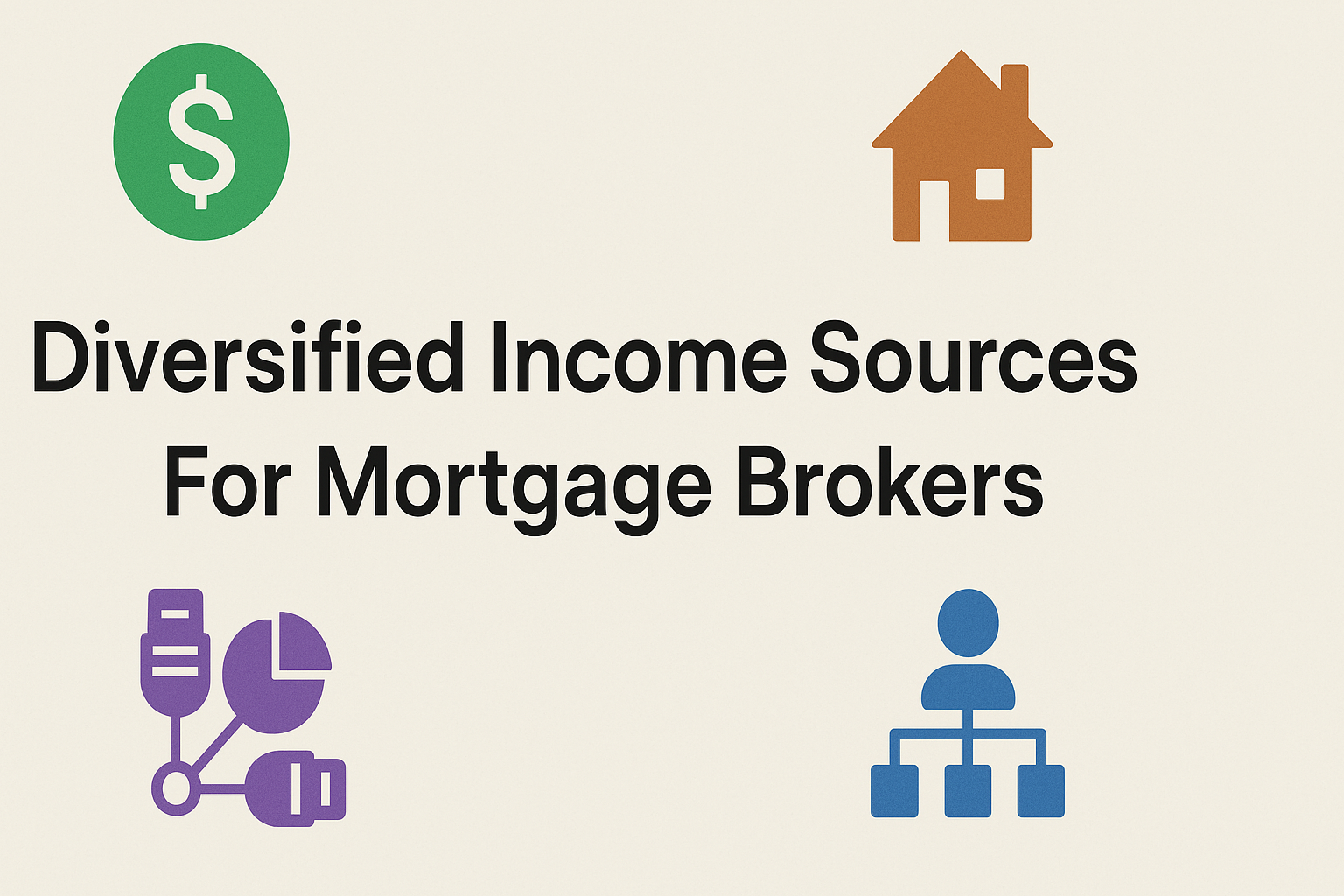Summary
This article explores income diversification strategies tailored for residential mortgage brokers operating in commission-based environments. Given the volatility of income tied to market cycles and Borrower demand, brokers face systemic financial risks that can undermine long-term stability. To address these challenges, the article introduces a multi-bucket cash flow strategy that segments income into distinct categories—such as core commissions, referral fees, advisory services, and passive investments. This approach enhances financial resilience, enabling brokers to manage risk, smooth out income fluctuations, and build a sustainable economic foundation.
Introduction
Residential mortgage brokers operate in a commission-driven environment where income is closely tied to market cycles, interest rate fluctuations, and Borrower demand. This dependency creates financial vulnerability—especially during economic downturns, seasonal slowdowns, or regulatory shifts that impact loan volume.
Multiple Buckets of Income
To counteract these risks, brokers can adopt a multi-bucket cash flow strategy that fosters financial resilience. By segmenting income into distinct buckets—such as core commissions, referral fees, advisory services, passive investments, and side ventures—brokers reduce reliance on any single source and create a more stable financial foundation.
Bucket |
Strategy |
Example |
|
Core Commission Income |
Income from closed residential loans. |
Purchase loans, refinances, FHA/VA loans. |
|
Referral Income |
Earn from referring clients to trusted professionals. |
Real estate agents, insurance brokers, and financial advisors. |
|
Credit Advisory Services |
Offer paid credit coaching or pre-qualification consulting. |
Help clients improve scores to qualify for better terms. |
|
Education Products |
Create and sell digital content. |
E-books, webinars, or online courses on home financing. |
|
Real Estate Investment |
Build passive income through property ownership. |
Rental properties, short-term rentals, REITs. |
|
Side Business |
Launch a complementary venture. |
Notary services, loan processing, document prep. |
|
Affiliate Marketing |
Promote financial tools or platforms. |
Credit monitoring, budgeting apps, mortgage calculators. |
|
Speaking/Training |
Paid engagements or workshops. |
First-time buyer seminars, agent training, CE courses. |
|
Residual Income |
Ongoing income from servicing or renewals (if applicable). |
Trailing commissions from lenders or aggregators. |
Building Financial Resilience Through Income Diversification
Each bucket serves a strategic purpose
- Core commissions drive growth during peak lending periods.
- Referral and affiliate income leverage existing networks for low-effort revenue.
- Credit advisory and education services monetize expertise while building client loyalty.
- Real estate investments generate passive income and long-term wealth.
- Side businesses offer flexibility and additional cash flow during lean months.
This diversified approach not only smooths out income volatility but also enhances the broker’s ability to weather market disruptions, invest in personal development, and plan for long-term financial goals. It transforms the broker from a transactional operator into a resilient entrepreneur with multiple levers of economic control, instilling a sense of confidence and empowerment.
Conclusion
Income diversification is not just a financial strategy—it is a resilience-building tool for residential mortgage brokers. By adopting a multi-bucket cash flow model, brokers can mitigate the risks associated with commission-based earnings and market fluctuations. Each income stream, whether core commissions, referral fees, or passive investments, contributes to a more stable and sustainable financial future, providing a sense of security and stability. Brokers who embrace this approach position themselves not only to survive economic shifts but to thrive as entrepreneurial professionals with multiple levers of financial control.
References
[1] Goldstein, I., Gelman, M., & MacKinlay, A. (2023). Bank Diversification and Lending Resiliency. Knowledge at Wharton. Retrieved from https://knowledge.wharton.upenn.edu/article/how-diversification-helps-banks-lend-more-cut-risk-and-boost-the-economy/
[2] Chartered Institute of Public Finance & Accountancy (CIPFA). (2022). The Importance of Financial Resilience. Retrieved from https://www.cipfa.org/-/media/files/cipfa-thinks/insight/importance-of-financial-resilience.pdf
[3] Consumer Financial Protection Bureau (CFPB). (2024). Real Estate Settlement Procedures Act (RESPA) Compliance Resources. Retrieved from https://www.consumerfinance.gov/compliance/compliance-resources/mortgage-resources/real-estate-settlement-procedures-act/
